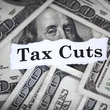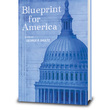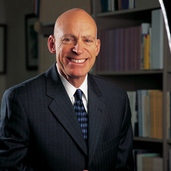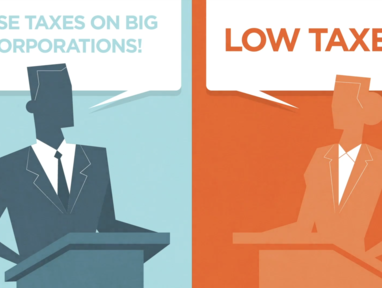Fixing the Way We Tax
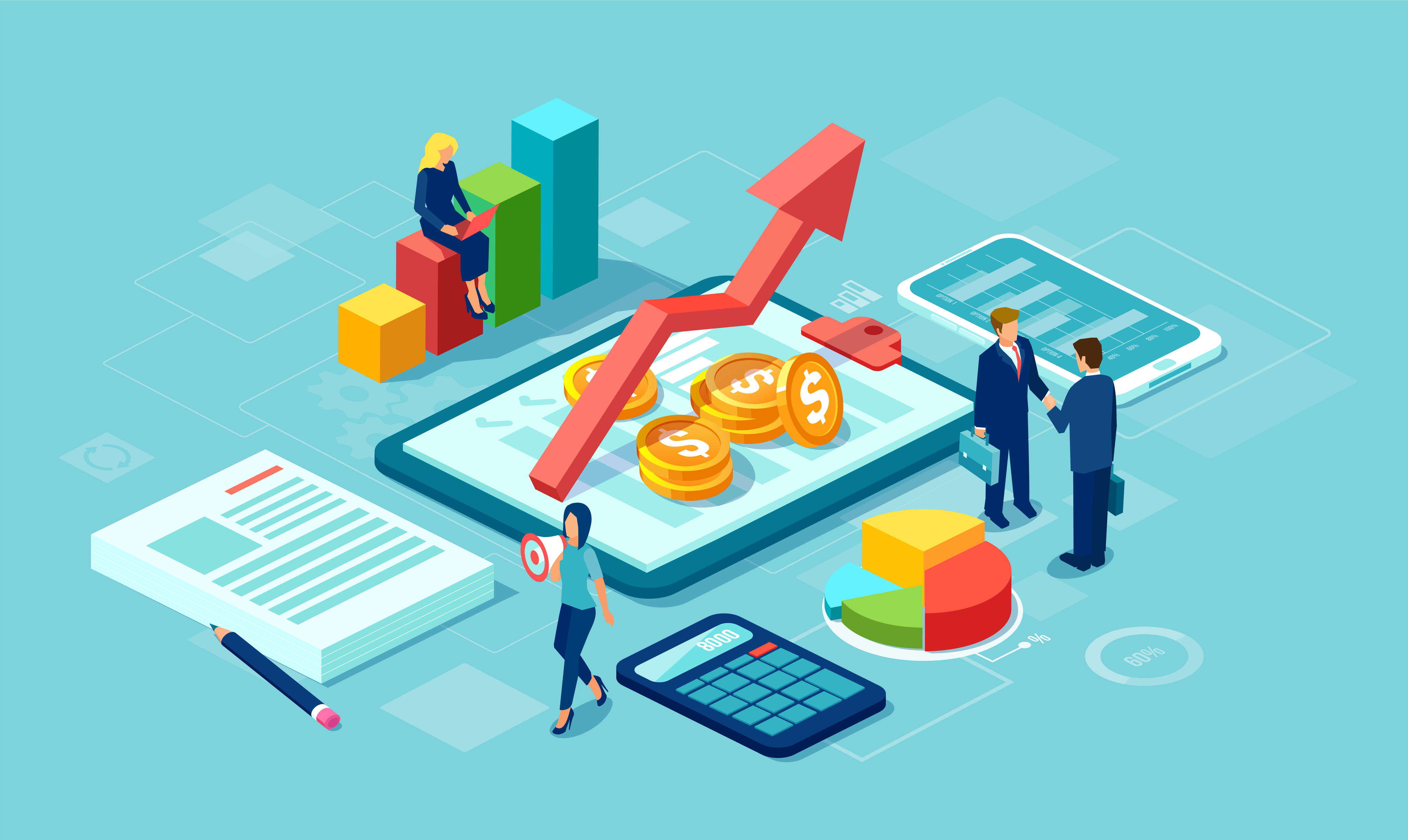
With the election less than a year away, presidential candidates are eagerly releasing new proposals that promise to rebuild the nation’s infrastructure, expand access to health care, and reduce college tuition. The one thing all of these ideas have in common is that they will be expensive. And unless candidates are willing to increase federal deficits that already exceed a trillion dollars, these expensive ideas mean raising someone’s taxes.
There are proposals to raise income tax rates on high-income families, create new wealth taxes, or expand payroll taxes up the income ladder. Do these tax hikes make economic sense? Or are there better tax-policy ideas?
What should the goal of tax policy be?
Nearly everyone has an opinion about taxes. For many, tax debates are mainly about who should pay more and who should pay less. These distributional questions matter. But there is another important dimension of tax policy that is often overlooked: how do taxes affect the economy?
Taxes affect what we buy, where we work, and how much we save. But the effects are not just personal; taxes impact our whole economy—now and in the future. In the video below, economist Ed Lazear explains what makes America’s economy exceptional. The United States has higher incomes and lower unemployment rates than most of the developed world. And more people want to come and work here than other countries. Lazear notes that one reason for America’s exceptional economy is that has historically had lower taxes than other developed countries.
So lower taxes are generally better for increasing prosperity and putting people to work, but the government still needs tax revenue to pay for roads, national defense, and other parts of government. The question tax policy needs to ask is then: how do we raise enough revenue to pay for government spending while minimizing the negative economic consequences of taxes? Economist John Cochrane explains why this should be our goal:
How do economists think about taxes?
Understanding tax policy—particularly when thinking about the US federal tax code—can be complicated. From countless deductions to multiple tax brackets, it is easy to get lost when completing one’s tax forms. But while it may seem complex, tax policy debates generally come down to two questions: What are we taxing? And much will we tax it?
The first question is about the tax base. The second question is about the rate. Most economists agree that in general the most efficient tax has a broad base and a low rate. If the tax base is too narrow or the rate is too high, then consumers, workers, and businesses change their behavior to avoid the tax. Consider the effects of a high tax rate on apples. The large tax will encourage consumers to buy other fruit. In response, farmers will raze apple trees and start planting orange and pear trees. The result will be fewer apples, but not much revenue for the government. In contrast, a low tax rate on all food will raise more revenue and not lead to large changes in behavior.
Economists focus on marginal tax rates, the tax rate you pay on the next dollar you earn. In the United States, we have a progressive income tax system, where the marginal tax increases as you earn more. You don’t pay any federal income taxes on the first few dollars you earn, but the last dollar you earn could face a federal income tax rate as a high as 37%. High earners pay marginal tax rates over 50% once we account for federal payroll taxes and state income taxes. That doesn’t mean that half their income goes to the government, because much of their income is taxed at lower rates. It does mean, however, that they only get to keep less than half of the next dollar they earn. In effect, at this level, they have become minority partners in their own labor output.
The video below explains how high marginal tax rates affect “how much we work, save, and spend, whether we start businesses, and how we run them.”
As the video explains, “Higher marginal tax rates ultimately make it less profitable to work, hire, or invest more; they lead to slower economic growth.” And slower economic growth matters more than it may seem. Watch this video to learn how small changes in economic growth rates affect our future well-being:
This is why Ed Lazear points to historically low US tax rates as an explanation for America’s exceptional economy. Low US tax rates have given entrepreneurs incentives to create and expand their businesses. They have given families more reason to save and invest in these growing companies. And they have given individuals more incentives to find jobs and work more.
Why shouldn’t we just increase taxes on the rich and big businesses?
You might be thinking that it doesn’t matter if the already rich work or save less. But there are a few reasons why high taxes on these groups aren’t necessarily beneficial.
The first is that the high taxes on the rich affect everyone’s future standard of living. If we impose high tax rates that affect decisions to work or save, then there will be less money available to invest in expanding our economy to everyone’s benefit. Less money will be available to finance new inventions or cures for diseases. Businesses will have a harder time buying new machines or building new factories, which ultimately means workers will have fewer job opportunities and face lower wages. Economist David Henderson explains the negative consequences of taxing savings:
“The greater the amount of capital, the more capital there is for workers to use on the job. Remember that capital is not money; capital is made up of things like plant and equipment. Even a sewing machine is valuable capital if the alternative is sewing by hand. The greater the amount of capital per worker, the higher is the productivity of workers. And the higher the productivity of workers, the higher are real wages.”
The second reason to be leery of high taxes on the rich or on big businesses is that it isn’t clear who ultimately bears the burden of the tax. Who actually pays the corporate tax? On one hand, the corporation writes the check to government. But who loses the income that goes to the government? John Cochrane explains that, “as an accounting matter, every cent corporations pay comes from higher prices, lower wages, or lower payments to shareholders. The only question is which one.” In short, the corporate tax is ultimately paid by a combination of workers, shareholders, and consumers. And importantly, who pays depends on who is least able to avoid the tax. As we explained in our Corporate Tax Reform Policy Insight:
“Who pays most of the tax—what economists call the incidence of taxation—comes down to who is least able to change their behavior. Globalization means shareholders are increasingly able to look elsewhere for returns. Customers and workers end up bearing a large portion of the tax in the form of higher prices and lower wages.”
So higher tax rates on the rich or on businesses discourage economically important investments. Or the tax is paid for by workers or consumers. In either case, higher tax rates end up reducing all of our standards of living, both now and in the future.
What’s wrong with the US tax code?
While the US economy has benefited from low tax rates relative to other developed nations, few people think the US tax code is an ideal tax system. It is overly complicated. It levies high marginal tax rates on some incomes. And it features countless loopholes that allow a lucky few to lower their tax burden.
This is nothing new. In fact, it used to be even worse. Milton Friedman described what the US tax code looked like 50 years ago:
The 1986 Tax Reform Act simplified the tax code, broadened the tax base, and lowered marginal tax rates. Since then, tax changes haven’t always been for the better. As discussed in our Corporate Tax Reform Policy Insight, the recent tax cuts did lower corporate tax rates and eliminated some loopholes. But other parts of the Tax Cuts and Jobs Act added to the tax code’s complexities. Before it became a law, Hoover Senior Fellow Richard Epstein noted that the tax plan was a mixed bag when it came to simplification:
“For one thing, it advocates expanding the child tax credit, which introduces needless complexity into the system. For another, it didn’t eliminate the interest deduction on home mortgages, which distorts the choice between owning and renting a home. That was a missed opportunity to simplify the tax code.”
It is hard to create a simple tax code. Any attempt to simplify the code will be met with significant opposition from taxpayers who benefit from current tax provisions. But a simplified tax code is a worthwhile aim that allows for a broader base and lower rates, which will benefit the economy.
What about a wealth tax?
Unlike proposals to increase income tax rates, a wealth tax would create a new tax on an entirely different tax base. The politics of the wealth tax are straightforward. It would only apply to wealthy households, so middle-class voters can rest easy. And the advertised rates seem low; even proponents of extreme wealth taxes argue for rates below 10%.
But while it looks attractive, a wealth tax is really just another tax with a narrow base and a high rate that will harm the economy. As we have seen, such taxes lead to large economic distortions and little revenue.
Wealth taxes are promoted as having low rates, but they would result in massive taxes on investing.
John Cochrane explains how a wealth tax would result in very high tax rates on investing:
Suppose the government puts in a 1% per year wealth tax. If wealth generates a 5% rate of return, then the 1% wealth tax is the same thing as a 20% one-time confiscation of value. If wealth generates a 1% rate of return, a 1% wealth tax is a 100% confiscation of value.
Cochrane explains that the higher the assumed rate of investment return, the lower the effective tax rate. But even if the rate of return is a healthy 10%, a 6% tax wealth tax (a rate featured in multiple Democratic presidential candidate policy proposals) would amount to a 60% tax on investment.
Such high tax rates would undoubtedly encourage tax avoidance strategies by the wealthy. How could they avoid a wealth tax? As economist David Henderson explains, the wealthy have three options when deciding what to do with their money:
“Activity A is continuing to invest it productively. Activity B is consuming it—for example, by hiring a big jet and taking their friends to a nice resort. Activity C is donating it to causes and, if the causes are political, having even larger influence on political causes than they have now. Both B and C are ways to avoid a tax on wealth; A is not.”
Are there better ways to tax?
As we have seen, high taxes on incomes or wealth lead to significant downstream effects that weaken today’s economy and mean fewer economic opportunities for future generations. Are there better ways to raise sufficient tax revenues to fund the government without harming the economy?
One better option is a consumption tax that would be levied on all goods and services purchased in the United States. The tax base would be incredibly broad, allowing for low rates that taxpayers would have less incentive to avoid. And because the tax would be applied equally to all goods and services in the United States, it wouldn’t produce as many economic distortions as our income or corporate taxes do. In Blueprint for America, economist Michael Boskin explains the economic value of consumption taxes:
“There is considerable research showing that moving toward a broad-based, integrated progressive consumption tax would significantly increase real GDP and future wages. Replacing both the corporate and personal income taxes with a broad, revenue-neutral consumption or consumed income tax would produce even larger gains.”
The main concern with a consumption tax is that it would be added on top of the existing tax system. To reap the full promised benefits of a consumption tax, it would need to replace the existing tax system. Critics of consumption taxes point to European countries that have high consumption taxes called value added taxes (VATs) and also high income taxes. But, if a consumption tax were to replace the current US tax code, there is little doubt that it would deliver more economic opportunities for Americans.
Conclusion
The politics of tax policy will always be difficult. Distributional questions about how much people should pay relative to others will always be asked when considering tax reforms. Efforts to end cherished deductions that complicate the tax code and narrow the base will be met with stiff opposition. But pursuing reforms that minimize economic distortions while raising enough revenue to fund the government remains a worthwhile endeavor.
Further Reading and Sources
In their book The Flat Tax, economist Robert Hall and political scientist Alvin Rabushka propose a fairer, simpler, and more efficient tax plan.
In Chapter 3 of Blueprint for America, Michael Boskin explains the problems with the US tax code and offers much-needed fixes. You can watch a related video here.
In his blog The Grumpy Economist, John Cochrane explains how not all tax cuts are the same, and how some tax cuts can end up raising tax rates and harming growth.



